Recent Articles
Popular Makes
Body Types
2019 Toyota C-HR vs. 2019 Honda HR-V: Which Is Best?
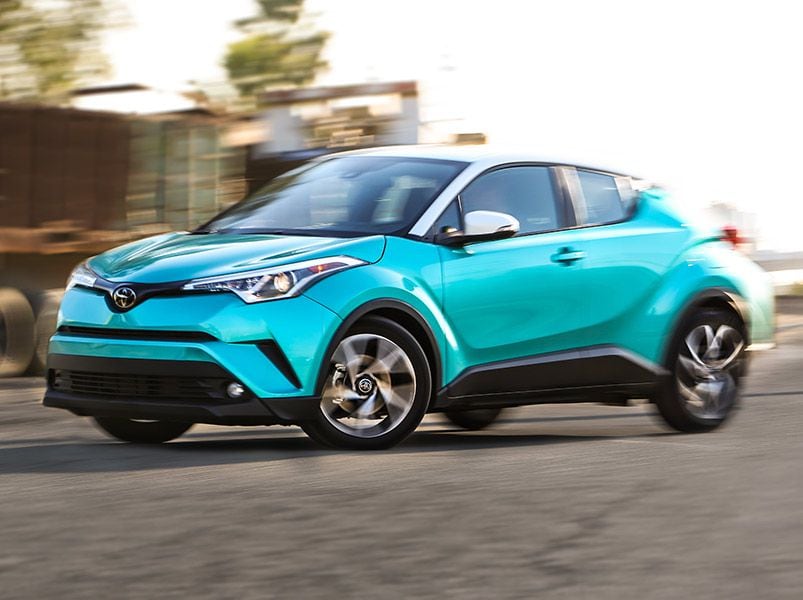
2018 Toyota C HR front three quarter driving ・ Photo by Toyota
The market for subcompact crossover SUVs has never been hotter than it is right now. Two of the main heavyweight contenders duking it out in the featherweight class of the SUV market are the 2019 Toyota C-HR and the 2019 Honda HR-V.
To find out which subcompact SUV is right for you, we’ll pick a winner in nine different categories and then sort out our choice for the overall victor. Read on and see if you agree with our conclusions.
Pricing and Trim Levels
The 2019 Toyota C-HR starts at $21,990 for the most basic LE trim. That vehicle is a front-wheel drive crossover with a 2.0-liter engine and continuously variable automatic transmission. The LE comes with black cloth upholstery and a standard Entune 3.0 infotainment system. Moving up to the XLE trim, the C-HR retails for $24,025 and comes with added safety gear and 18-inch wheels. The top Limited trim will cost you $27,045, and buyers will enjoy an enhanced infotainment system and leather upholstery.
The base price of the 2019 Honda HR-V is $21,515, which buys a base LX with front-wheel drive, a 1.8-liter engine, and a continuously variable transmission. Honda offers six different trim levels, and upgrades include the Sport trim at $23,195 with active noise cancellation, fog lights, and roof rails. More features are added with each trim level up to the top Touring trim at $29,515. The HR-V Touring offers standard all-wheel drive, adaptive cruise control, and heated leather seats.
Honda HR-V
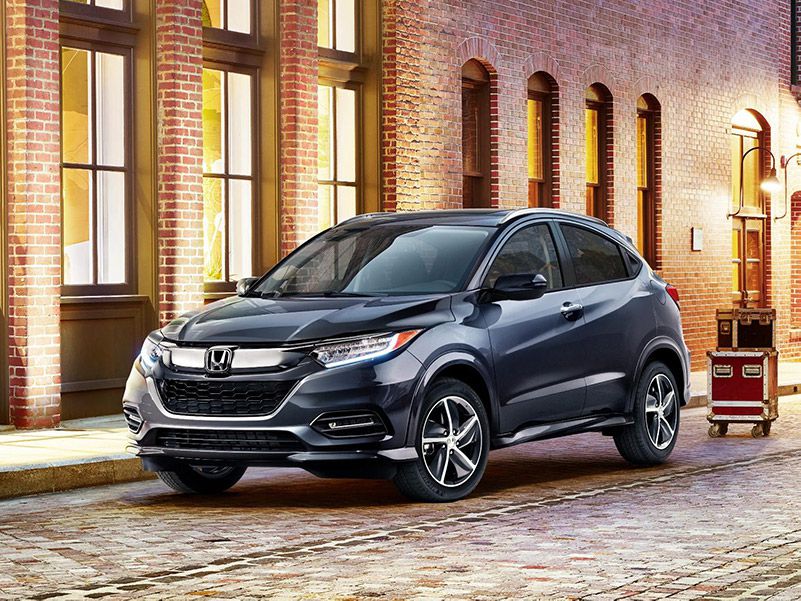
Photo by Honda
Safety Features
The Honda HR-V offers standard safety equipment including stability and traction control systems, antilock brakes, daytime running lights, and a multi-angle rearview camera on all trims. The top EX, EX-L, and Touring trims have advanced active safety features including forward-collision and lane-departure warnings, a collision-mitigation braking system, and a road-departure mitigation system. Advanced driver assistance on top trim levels includes lane keeping assistance, adaptive cruise control, and Honda’s LaneWatch right-hand blind spot camera.
All trim levels of the Toyota C-HR include Toyota’s Star Safety System of stability and traction controls, antilock brakes, and smart stop emergency braking. Additionally, every C-HR comes with Toyota Safety Sense P, including a pre-collision braking system with pedestrian detection, a lane-departure alert with steering assist, automatic high beams, and full speed range adaptive cruise control.
Toyota C-HR
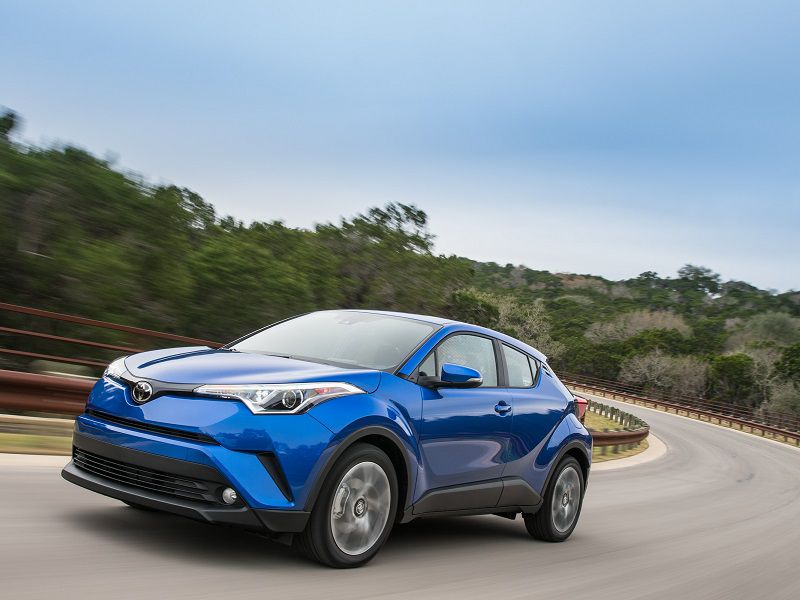
Photo by Toyota
Seating Capacity
The Honda HR-V seats five passengers, and it includes Honda's innovative second-row Magic Seat. The bottom part of the seat can be flipped up to accommodate larger items such as bicycles vertically behind the front seats. The 60/40 split seatbacks also fold down for conventional SUV cargo purposes. In the top EX, EX-L, and Touring trim levels, the front seats are heated. In the EX-L and Touring trims, all seats are upholstered in leather.
The Toyota C-HR also seats five people, with front row heat and leather upholstery available only in the top Limited trim. The rear seat is also a 60/40 split, and it folds down flat and level with the cargo area floor.
Honda HR-V

Photo by Honda
Engine Power and Performance
The Toyota C-HR is equipped a 2.0-liter inline four-cylinder engine paired with a continuously variable transmission. The C-HR engine delivers 144 horsepower and 139 pound-feet of torque, but the Toyota is heavy, weighing in at 3,300 pounds. The C-HR will go from 0-60 in about 11 seconds.
Honda’s HR-V weighs in between 2,906 and 3,150 pounds, depending on trim level, and it carries a 1.8-liter inline four-cylinder engine rated at 141 horsepower and 127 pound-feet of torque, mated to a continuously variable transmission. All trim levels except the base trim offer dual-mode paddle shifters if you want to control the vehicle’s drive ratios for sportier performance. The HR-V will accelerate from 0-60 MPH in about 9.3 seconds.
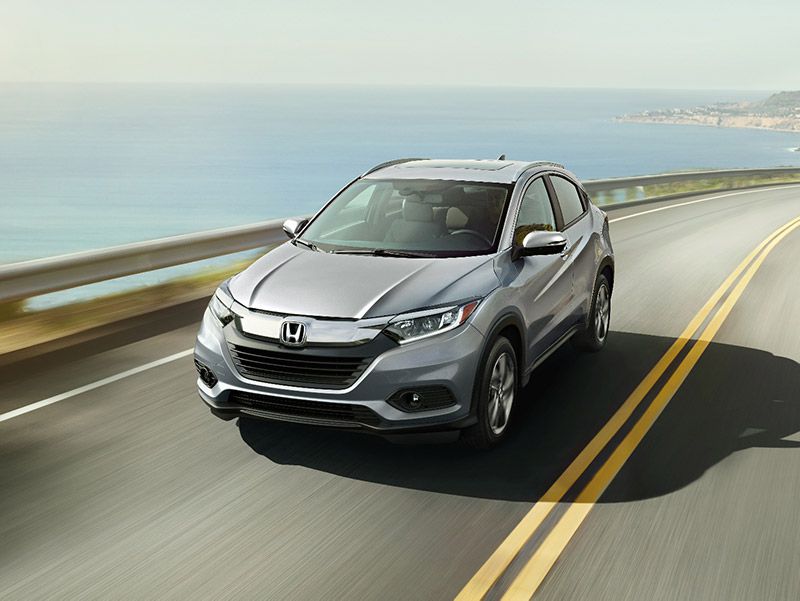
Photo by Honda
Fuel Economy
The 2019 Honda HR-V is EPA-rated to return up to 28 mpg in city driving and up to 34 mpg on the highway, with combined mpg of 30 in the lightest LX trim level with front-wheel drive. Those numbers drop to 26 mpg city, 31 mpg highway, and 28 mpg combined in the heaviest Touring trim with AWD.
The 2019 Toyota C-HR is EPA-rated to return 27 mpg in city driving and up to 31 mpg on the highway, with 29 mpg in combined driving, regardless of the trim.
Honda HR-V
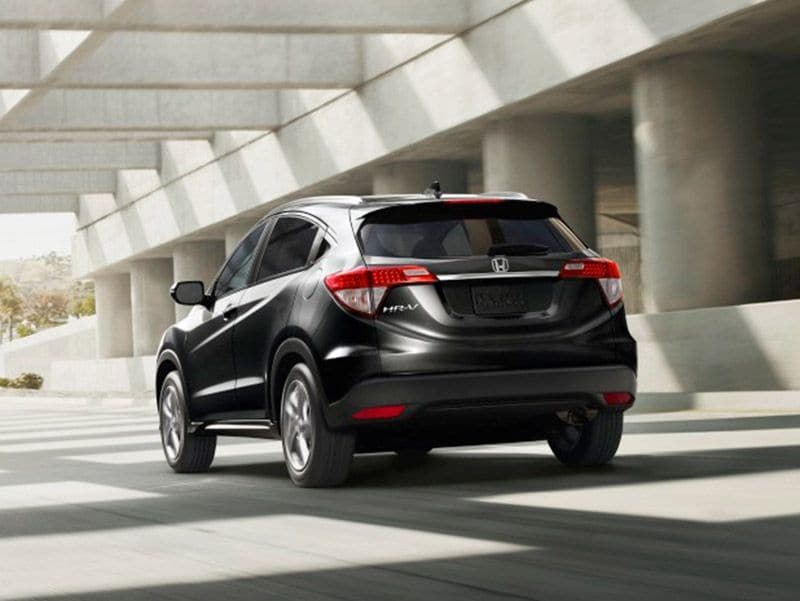
Photo by Honda
All-Wheel Drive Availability
Toyota has not yet offered any kind of all-wheel drive system on the C-HR. This follows a trend in the industry for many subcompact crossovers, which assumes that these smaller SUVs are primarily urban and suburban vehicles.
Honda offers AWD on all trims of the HR-V. On most trims, choosing AWD adds $2,100 to the purchase price. On the top Touring trim, AWD is standard.
Honda HR-V
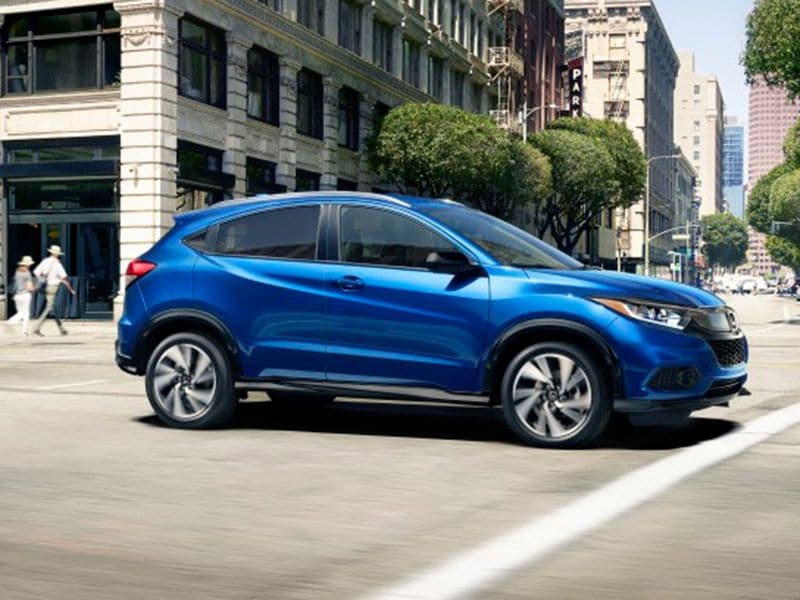
Photo by Honda
Cargo Space
The Honda offers up to 24.3 cubic feet of cargo volume behind the rear seat and up to 58.8 cubic feet with it folded flat. There’s a little less space if you opt for AWD, however: 23.2 cubic feet in the back, and 57.6 cubic feet with the rear seat down. The EX, EX-L, and Touring trims offer only 55.9 cubic feet with the rear seats down.
The C-HR is a smaller vehicle, with 19 cubic feet behind the rear seats, and 36.4 cubic feet of total cargo space with the rear seats folded flat.
Honda HR-V
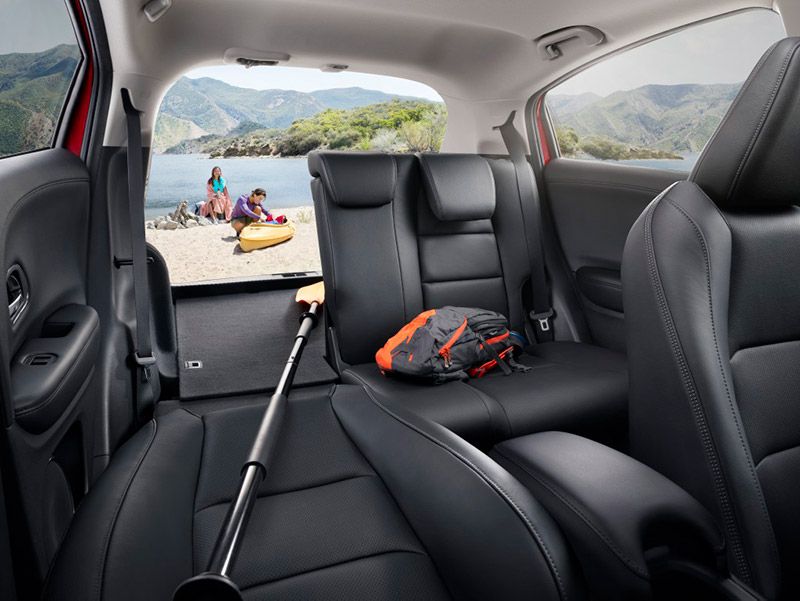
Photo by Honda
Technology Packages
All 2019 C-HR trims come with an 8-inch touchscreen infotainment interface that supports Apple CarPlay, Scout GPS, Siri Eyes Free, Bluetooth streaming and hands-free phone support, and voice command control. An upgraded system that supports HD radio, Sirius/XM satellite radio, Toyota Connected Services, and Verizon Wi-Fi Connect is optional on the mid-grade XLE and standard on the top Limited trim. On the Limited, GPS navigation can be added to the upgraded system.
In the base trim, the HR-V includes a 5-inch color display screen with a basic sound system that supports Bluetooth streaming and phone interaction. All higher trim levels come with a 7-inch touchscreen that supports Android Auto, Apple CarPlay, and HondaLink app integration. EX, EX-L, and Touring trims support Sirius/XM and HD radio, and the Touring trim includes GPS navigation, voice control, and Honda HD Digital Traffic reports.
Toyota C-HR

Photo by Toyota
Exterior Styling
The Honda HR-V reflects Honda’s more conservative design sense, with a basic crossover appearance that will blend in with the crowd. The top trim includes LED headlights, and all trims except the base LX include fog lights. Overall length of the HR-V is 170.9 inches. Most HR-V trims use 17-inch wheels, while the Sport trim features 18-inch wheels.
The Toyota C-HR is a more rakish, urban design intended to appeal to a younger, sporty buyer. Bold fender flares and high taillights give the C-HR an aggressive look, while features like a rear underbody diffuser and top-mounted rear spoiler suggest speed. LED daytime running lights are included on all trims while LED fog lights are standard on the Limited. The base trim provides 17-inch wheels, while both upgrade trims feature 18-inch wheels.
Toyota C-HR

Photo by Toyota
Verdict
The Honda HR-V wins our contest on points, but it’s a close comparison between these two attractive subcompacts, and each has its strengths. More than 94,000 buyers chose the Honda HR-V last year. Toyota sold only 25,755 units of the C-HR, but the vehicle was a mid-year addition, so 2018 will be the first full year for sales statistics.
Buyers may choose the Honda for performance, cargo capacity, all-wheel drive, or just for having more trim levels to choose from. The Toyota will win among buyers looking for more standard safety features, a better technology package, or just a more aggressive-looking vehicle. Either way, these are two of the top-rated subcompact crossovers on the market, and it’s hard to make a bad choice between them.
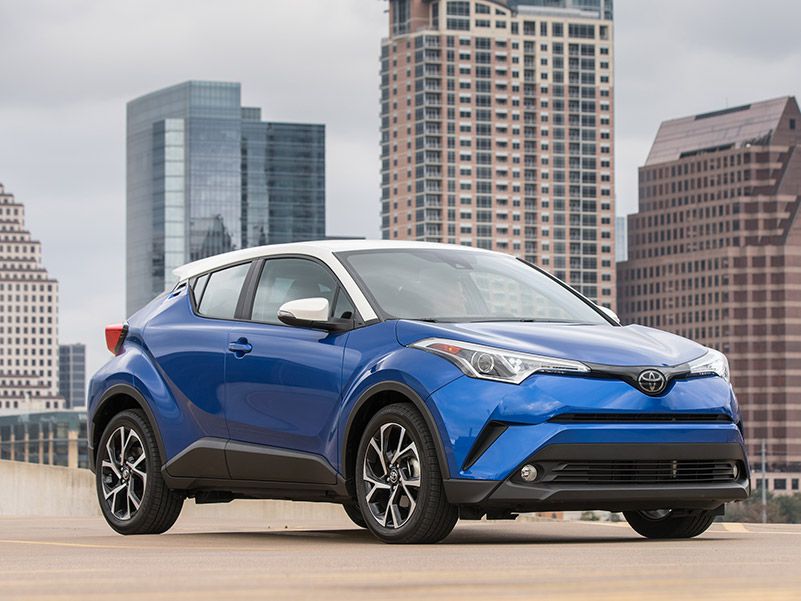
Photo by Toyota